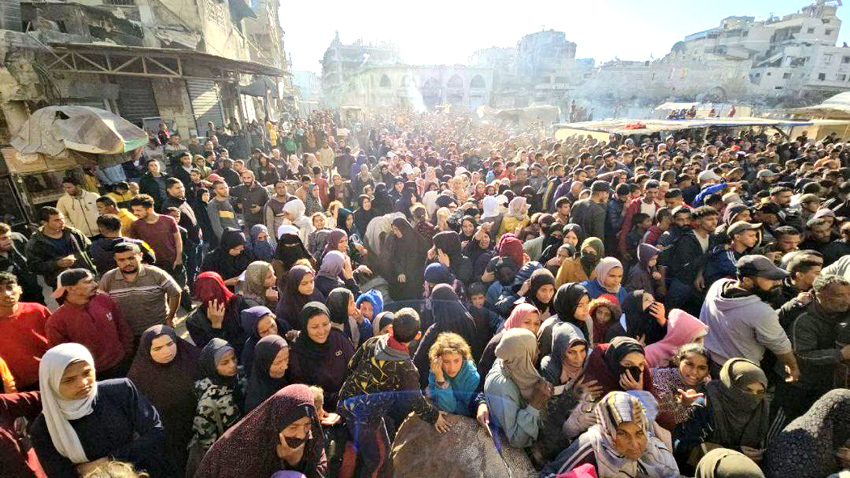
MORE than two million people in the Gaza Strip are besieged by hunger, thirst, disease and fear and obtaining meals has become an impossible task, the United Nations Relief and Works Agency for Palestine Refugees (UNRWA) warned yesterday.
Even in the central parts of the Gaza Strip there is barely any food and many Palestinians are unable to get even one meal per day, UNRWA warned.
Tens of thousands of displaced Palestinians in Gaza are facing even harsher conditions as heavy rainfall caused widespread damage to makeshift shelters yesterday.
The rainwater flooded tents that had been set up as temporary housing for families who were already displaced due to the ongoing Israeli airstrikes and bombardment.
Rescue teams reported significant damage to tents in several areas across the Gaza Strip, particularly in the Yarmouk Stadium refugee camp, Gaza City’s Municipal Park, and the Al-Shati refugee camp.
Additional damage occurred in areas such as Wadi al-Dumaythah in Khan Younis, Wadi al-Salqa, the vicinity of Al-Amal neighbourhood, the grounds of Al-Aqsa University, the Shakush area in Rafah, and along the coastline of Deir al-Balah.
The flooded tents, which house thousands of displaced families, have suffered severe damage, ruining personal belongings, mattresses, and essential items.
The families, who have already lost their homes due to the ongoing Israeli genocide, now face the additional hardship of having their temporary shelters destroyed by the winter rains.
Rescue teams have raised alarm about the growing risk of further disaster, especially in low-lying areas where water drainage systems have been destroyed by Israel’s airstrikes.
The destruction of Gaza’s infrastructure has made it nearly impossible for floodwaters to be properly channelled, worsening the flooding situation.
In addition to the risk of flooding, there is also growing concern that buildings which have been damaged by bombing, and are being used as shelters, could collapse, leading to further casualties.
The ongoing destruction of Gaza’s infrastructure, combined with the displacement of families and the continuing Israeli blockade, has created a dire situation for those living in the refugee camps and makeshift shelters.